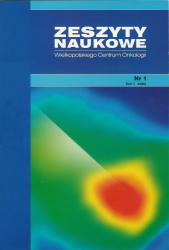Abstract
Certain cancer treatments cause an increase in the number of senescent cells in cancer and nonmalignant cells. Senescence which is characterized by telomere shortening, DNA damage, and improper expression of oncogenes are all examples of triggers that cause cellular senescence. Failure to rejoin the cell cycle after mitotic stimulation, resistance to cell death, and an increased secretory phenotype are all signs of senescence. A rising number of studies point that spontaneous senescence and therapy-induced senescence (TIS) play a strong role in cancer aggressiveness. Senescent cells may have a role in oncogenesis mainly through the senescence associated secretory phenotype (SASP), which produces an immunosuppressive environment. This aids in tumor development and relapse by secreting factors such as IL-6, IL-8, CCL5, VEGF, and CXCL5 that contribute to cell proliferation, migration, invasiveness, angiogenesis, and epithelial–mesenchymal transition (EMT) as well as immune-mediated clearance.
References
B. Wang, J. Kohli, and M. Demaria, “Senescent Cells in Cancer Therapy: Friends or Foes?,” Trends in Cancer, vol. 6, no. 10, pp. 838–857, Oct. 2020, doi: 10.1016/J.TRECAN.2020.05.004.
A. Hernandez-Segura, J. Nehme, and M. Demaria, “Hallmarks of Cellular Senescence,” Trends in Cell Biology, vol. 28, no. 6. Elsevier Ltd, pp. 436–453, Jun. 01, 2018, doi: 10.1016/j.tcb.2018.02.001.
A. Calcinotto, J. Kohli, E. Zagato, L. Pellegrini, M. Demaria, and A. Alimonti, “Cellular Senescence: Aging, Cancer, and Injury,” Physiol Rev, vol. 99, pp. 1047–1078, 2019, doi: 10.1152/physrev.00020.2018.-Cellular.
P. G. Prasanna et al., “Therapy-Induced Senescence: Opportunities to Improve Anti-Cancer Therapy,” doi: 10.1093/jnci/djab064/6207975.
B. Wang, J. Kohli, and M. Demaria, “Senescent Cells in Cancer Therapy: Friends or Foes?,” Trends in Cancer, vol. 6, no. 10. Cell Press, pp. 838–857, Oct. 01, 2020, doi: 10.1016/j.trecan.2020.05.004.
S. G. Rao and J. G. Jackson, “SASP: Tumor Suppressor or Promoter? Yes!,” Trends in Cancer, vol. 2, no. 11. Cell Press, pp. 676–687, Nov. 01, 2016, doi: 10.1016/j.trecan.2016.10.001.
C. R. Chambers, S. Ritchie, B. A. Pereira, and P. Timpson, “Overcoming the senescence-associated secretory phenotype (SASP): a complex mechanism of resistance in the treatment of cancer,” Molecular Oncology, vol. 15, no. 12. John Wiley and Sons Ltd, pp. 3242–3255, Dec. 01, 2021, doi: 10.1002/1878-0261.13042.
U. Schoetz et al., “Early senescence and production of senescence-associated cytokines are major determinants of radioresistance in head-and-neck squamous cell carcinoma,” Cell Death Dis., vol. 12, no. 12, Dec. 2021, doi: 10.1038/s41419-021-04454-5.
J. Yang, M. Liu, D. Hong, M. Zeng, and X. Zhang, “The Paradoxical Role of Cellular Senescence in Cancer,” Frontiers in Cell and Developmental Biology, vol. 9. Frontiers Media S.A., Aug. 12, 2021, doi: 10.3389/fcell.2021.722205.
A. Krtolica, S. Parrinello, S. Lockett, P. Y. Desprez, and J. Campisi, “Senescent fibroblasts promote epithelial cell growth and tumorigenesis: a link between cancer and aging,” Proc. Natl. Acad. Sci. U. S. A., vol. 98, no. 21, pp. 12072–12077, Oct. 2001, doi: 10.1073/PNAS.211053698.
S. G. Rao and J. G. Jackson, “SASP: Tumor Suppressor or Promoter? Yes!,” Trends in Cancer, vol. 2, no. 11, pp. 676–687, Nov. 2016, doi: 10.1016/J.TRECAN.2016.10.001.
S. Parrinello, J. P. Coppe, A. Krtolica, and J. Campisi, “Stromal-epithelial interactions in aging and cancer: senescent fibroblasts alter epithelial cell differentiation,” J. Cell Sci., vol. 118, no. Pt 3, pp. 485–496, Feb. 2005, doi: 10.1242/JCS.01635.
G. H. Di, Y. Liu, Y. Lu, J. Liu, C. Wu, and H. F. Duan, “IL-6 Secreted from Senescent Mesenchymal Stem Cells Promotes Proliferation and Migration of Breast Cancer Cells,” PLoS One, vol. 9, no. 11, p. e113572, Nov. 2014, doi: 10.1371/JOURNAL.PONE.0113572.
J. Yang, M. Liu, D. Hong, M. Zeng, and X. Zhang, “The Paradoxical Role of Cellular Senescence in Cancer,” Front. Cell Dev. Biol., vol. 9, p. 2200, Aug. 2021, doi: 10.3389/FCELL.2021.722205/BIBTEX.
A. Toso et al., “Enhancing chemotherapy efficacy in Pten-deficient prostate tumors by activating the senescence-associated antitumor immunity,” Cell Rep., vol. 9, no. 1, pp. 75–89, Oct. 2014, doi: 10.1016/J.CELREP.2014.08.044.
L. Wyld et al., “Senescence and cancer: A review of clinical implications of senescence and senotherapies,” Cancers (Basel)., vol. 12, no. 8, pp. 1–20, Aug. 2020, doi: 10.3390/cancers12082134.

This work is licensed under a Creative Commons Attribution-NoDerivatives 4.0 International License.
Copyright (c) 2022 Letters in Oncology Science
